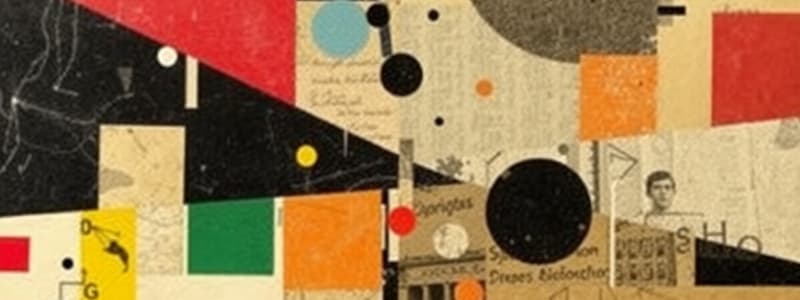Podcast
Questions and Answers
Oxygen has a little ______ charge due to its higher number of electrons.
Oxygen has a little ______ charge due to its higher number of electrons.
negative
Hydrogen has a little ______ charge because it has fewer electrons.
Hydrogen has a little ______ charge because it has fewer electrons.
positive
The bonds that form between neighboring water molecules are called ______ bonds.
The bonds that form between neighboring water molecules are called ______ bonds.
hydrogen
In a water molecule, oxygen is more ______ dense than hydrogen.
In a water molecule, oxygen is more ______ dense than hydrogen.
When conducting experiments, ensure to only change one ______ to maintain validity.
When conducting experiments, ensure to only change one ______ to maintain validity.
A ______ is a uniform mixture of pure substances.
A ______ is a uniform mixture of pure substances.
Examples of a ______ mixture include sand and water.
Examples of a ______ mixture include sand and water.
Metals are generally ______ at room temperature.
Metals are generally ______ at room temperature.
Changing the ______ number changes the element.
Changing the ______ number changes the element.
Electrons are added or removed to form ______.
Electrons are added or removed to form ______.
A compound consists of ______ bonded together.
A compound consists of ______ bonded together.
The stability of the nucleus depends on the ratio of ______ to neutrons.
The stability of the nucleus depends on the ratio of ______ to neutrons.
Hydrogen bonds are interactions between ______.
Hydrogen bonds are interactions between ______.
Flashcards are hidden until you start studying
Study Notes
Compounds, Homogenous, and Heterogenous Mixtures
- A compound is formed when two or more elements chemically bond to form a single particle.
- Examples of compounds: Carbon Dioxide (CO2) and Oxygen (O2)
- A homogenous mixture is a uniform mixture of pure substances; all parts are the same.
- Examples of homogenous mixtures: Milk and Oil
- A heterogenous mixture is a non-uniform mixture of pure substances; the parts are unevenly distributed.
- Examples of heterogenous mixtures: Sand + Water, Milk + Nesquik
Metals, Non-Metals, and Metalloids
- Metals:
- Tend to lose electrons
- Conduct heat and electricity
- Malleable (bend into shapes)
- Ductile (drawn out into wires)
- Generally solid at room temperature
- High melting and boiling points
- Lustrous (shiny)
- Non-Metals:
- Tend to gain electrons
- Do not conduct heat and electricity well
- Brittle (break easily)
- Not ductile
- Generally a gas at room temperature
- Low melting and boiling points
- Metalloids:
- Have properties of both metals and non-metals
- Examples: Silicon and Germanium
Atomic Structure and Changes
- Changing the number of protons changes the element.
- Changing the number of electrons changes the charge of an atom, but does not affect the nucleus.
- Changing the number of neutrons changes the stability of the nucleus, creating different isotopes.
- The stability of the nucleus depends on the ratio of protons to neutrons.
Particle Theory
- All matter is made up of particles.
- Particles are attracted to each other.
- When heat is added, particles spread out and move more.
- Particles are always moving.
Density and Water
- Usually, adding heat causes particles to spread out and decrease density.
- Water is an exception because hydrogen bonds form a lattice structure when it freezes, making ice less dense than liquid water.
Ions and Chemical Symbols
- Ions are charged atoms formed by adding or removing electrons.
- Cations are positively charged ions.
- Anions are negatively charged ions.
- Chemical symbols:
- Generally based on Latin
- Represents an element
- Atomic mass is provided below the symbol (average mass of protons and neutrons).
Hydrogen Bonds
- Hydrogen bonds are not actual bonds, but interactions between molecules.
- They occur due to the uneven distribution of electrons in molecules.
- Oxygen has a more negative charge, and hydrogen has a more positive charge.
- This causes a slight attraction between the molecules.
- Hydrogen bonds are responsible for the unique properties of water.
Graphing
- Use a sharp pencil.
- Use a ruler and do not force a curve to be a straight line.
- Have an eraser.
- Do not use “dot to dot” methods for graphing.
- Line graphs are used for continuous data that is usually changing.
- Column graphs are used to compare data.
- Fair test: Only change one variable.
- True validity: Answer the aim and control variables.
- Repeat the experiment for reliable data.
Studying That Suits You
Use AI to generate personalized quizzes and flashcards to suit your learning preferences.




